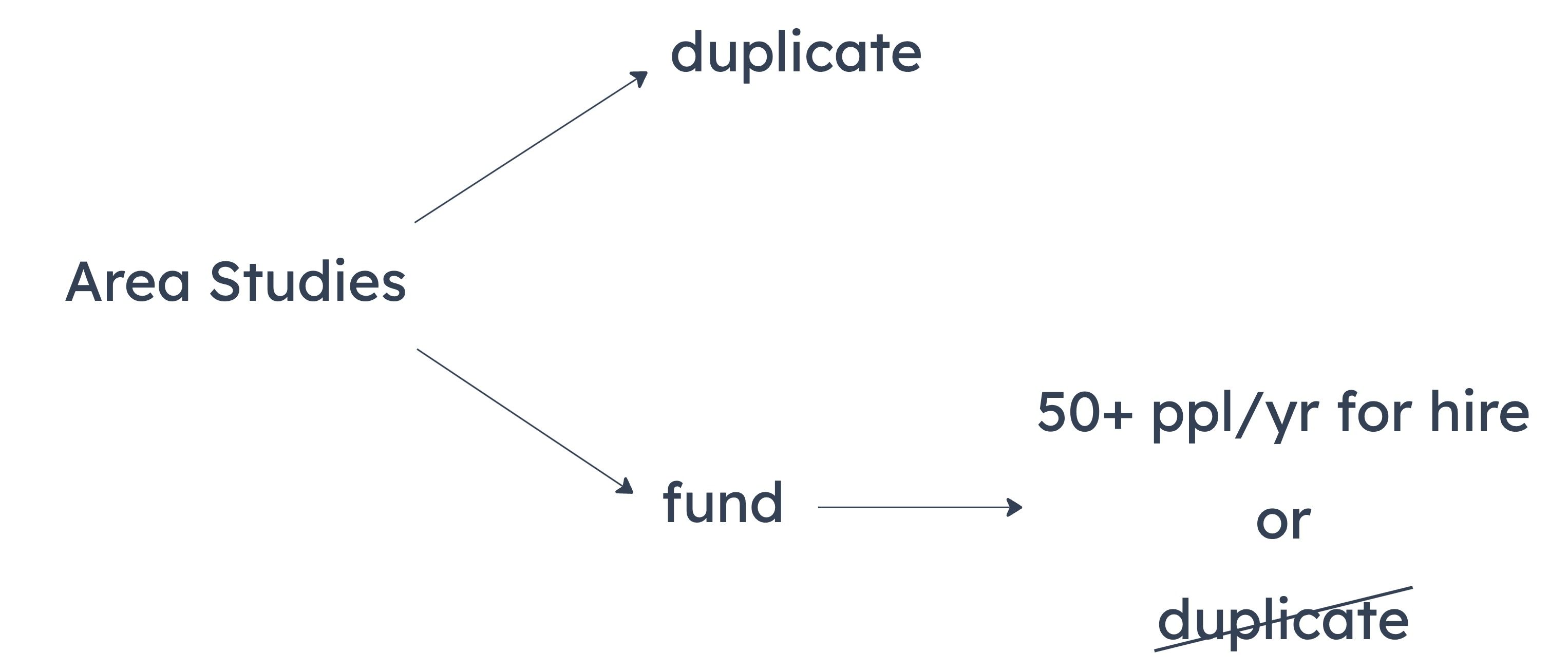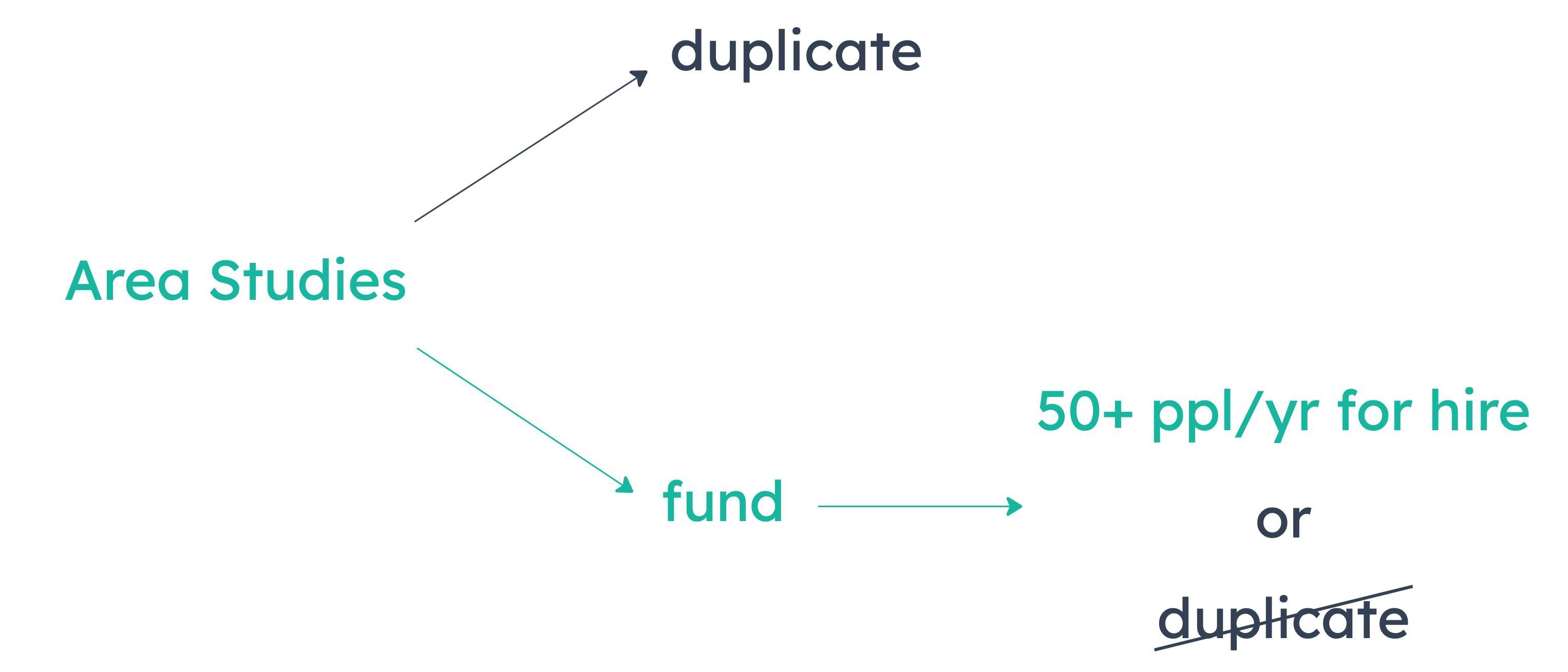
A
Vacuum tubes are not now preferable to semiconductors for use in digital circuits.
B
Once vacuum tubes and semiconductors have comparable maximum current capacity, vacuum tubes will be used in some digital circuits.
C
The only reason that vacuum tubes are not now used in digital circuits is that vacuum tubes’ maximum current capacity is too low.
D
Semiconductors will always be preferable to vacuum tubes for use in many applications other than digital circuits.
E
Resistance to heat is the only advantage that vacuum tubes have over semiconductors.
University administrator: Any proposal for a new department will not be funded if there are fewer than 50 people per year available for hire in that field and the proposed department would duplicate more than 25 percent of the material covered in one of our existing departments. The proposed Area Studies Department will duplicate more than 25 percent of the material covered in our existing Anthropology Department. However, we will fund the new department.
Summary
The stimulus can be diagrammed as follows:

Notable Valid Inferences
Some proposals duplicate more than 25% of the material covered in an existing department and are still funded.
There are 50+ people per year available for hire in the field of Area Studies.
A
The field of Area Studies has at least 50 people per year available for hire.
Must be true. The necessary condition for funding is: the department must not duplicate >25% of an existing department’s material, or the hiring availability threshold of 50/year must be met. The proposal duplicates >25% and will be funded, so the hiring condition must be true.

B
The proposed Area Studies Department would not duplicate more than 25 percent of the material covered in any existing department other than Anthropology.
Could be false. We have no information about whether the proposed Area Studies Department duplicates material covered in any existing department other than Anthropology, and the stimulus gives us no way to draw this inference.
C
If the proposed Area Studies Department did not duplicate more than 25 percent of the material covered in Anthropology, then the new department would not be funded.
Could be false. “/Duplicate” is not a sufficient condition for funding, so we can’t infer anything about whether the Area Studies Department would be funded if it did not duplicate more than 25% of the material covered in Anthropology (or any other department).
D
The Anthropology Department duplicates more than 25 percent of the material covered in the proposed Area Studies Department.
Could be false. If there’s more material covered in the proposed Area Studies Department than there is in the Anthropology Department, it’s possible that the Anthropology material could fail to duplicate more than 25% of the Area Studies material.
E
The field of Area Studies has fewer than 50 people per year available for hire.
Must be false. The necessary condition for funding is: the department must not duplicate >25% of an existing department’s material, or the hiring availability threshold of 50/year must be met. The proposal duplicates >25%, so there must be 50+ people available to hire per year.

If it became easier for people to limit their caffeine intake, some people’s health would improve.
If exact caffeine content were listed on soft drink labels, some people’s health would improve.
A
The health of at least some people would improve if exact caffeine content were listed on soft-drink labels.
B
Many people will be unable to limit their caffeine intake if exact caffeine content is not listed on soft-drink labels.
C
Many people will find it difficult to eliminate their caffeine intake if they have to guess exactly how much caffeine is in their soft drinks.
D
People who wish to eliminate, rather than simply limit, their caffeine intake would benefit if exact caffeine content were listed on soft-drink labels.
E
The health of at least some people would worsen if everyone knew exactly how much caffeine was in their soft drinks.
Musicologist: Many critics complain of the disproportion between text and music in Handel’s da capo arias. These texts are generally quite short and often repeated well beyond what is needed for literal understanding. Yet such criticism is refuted by noting that repetition serves a vital function: it frees the audience to focus on the music itself, which can speak to audiences whatever their language.
Summarize Argument: Counter-Position
The musicologist argues that critics’ disapproval of the imbalance between the short, repetitive texts and the music in Handel's da capo arias can be refuted. This is because the critics overlook the important role of repetition. Repetition allows the audience to concentrate on the music, which can communicate universally, regardless of language.
Identify Conclusion
The conclusion is the musicologist’s claim that the critics’ criticism of the imbalance between the short, repetitive texts and the music in Handel’s da capo arias can be refuted: “such criticism is refuted”.
A
Handel’s da capo arias contain a disproportionate amount of music.
This is context. It provides background on a common criticism of Handel’s da capo arias.
B
Handel’s da capo arias are superior to most in their accessibility to diverse audiences.
The musicologist does not make this claim. While the nature of the repetition allows it to speak to audiences regardless of language, the musicologist does not compare this ability to other music.
C
At least one frequent criticism of Handel’s da capo arias is undeserved.
This is the main point of the musicologist’s reasoning, which is that while many critics complain of the imbalance between the text and music in Handel’s da capo arias, this criticism can be refuted. In other words, it is undeserved.
D
At least some of Handel’s da capo arias contain unnecessary repetitions.
The musicologist does not claim the repetitions are unnecessary. The musicologist instead claims the repetitions serve a vital function.
E
Most criticism of Handel’s da capo arias is unwarranted.
This is not the musicologist’s conclusion. The conclusion is that one specific criticism of Handel’s da capo arias can be refuted, not that most criticisms can be.